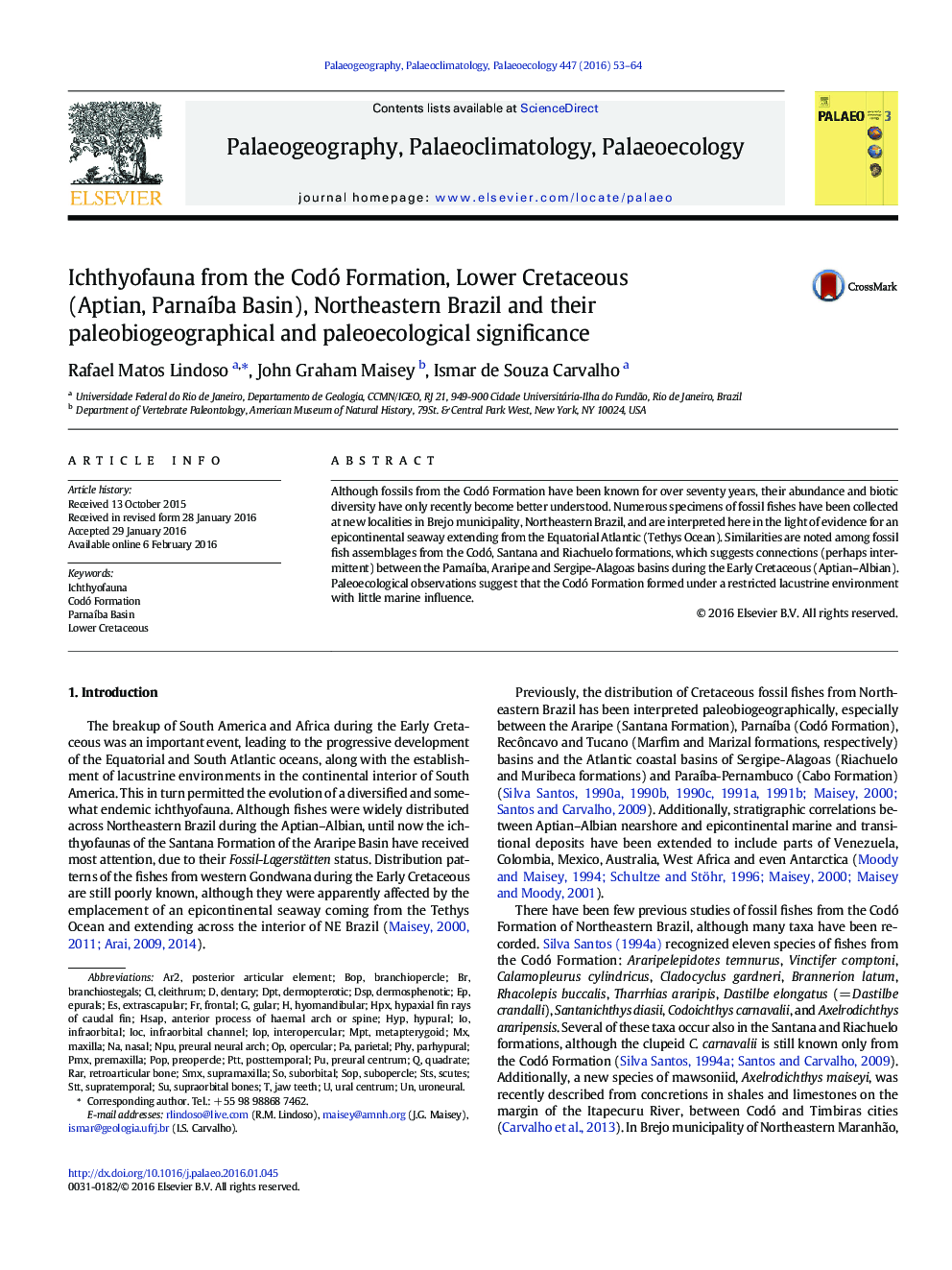| کد مقاله | کد نشریه | سال انتشار | مقاله انگلیسی | نسخه تمام متن |
|---|---|---|---|---|
| 4465796 | 1622144 | 2016 | 12 صفحه PDF | دانلود رایگان |

• Fossil fishes have been collected in Brejo municipality, northeastern Brazil.
• This paleoichthyofauna suggests a seaway coming from the Equatorial Atlantic.
• This seaway connected several sedimentary basins across northeastern Brazil.
Although fossils from the Codó Formation have been known for over seventy years, their abundance and biotic diversity have only recently become better understood. Numerous specimens of fossil fishes have been collected at new localities in Brejo municipality, Northeastern Brazil, and are interpreted here in the light of evidence for an epicontinental seaway extending from the Equatorial Atlantic (Tethys Ocean). Similarities are noted among fossil fish assemblages from the Codó, Santana and Riachuelo formations, which suggests connections (perhaps intermittent) between the Parnaíba, Araripe and Sergipe-Alagoas basins during the Early Cretaceous (Aptian–Albian). Paleoecological observations suggest that the Codó Formation formed under a restricted lacustrine environment with little marine influence.
Journal: Palaeogeography, Palaeoclimatology, Palaeoecology - Volume 447, 1 April 2016, Pages 53–64